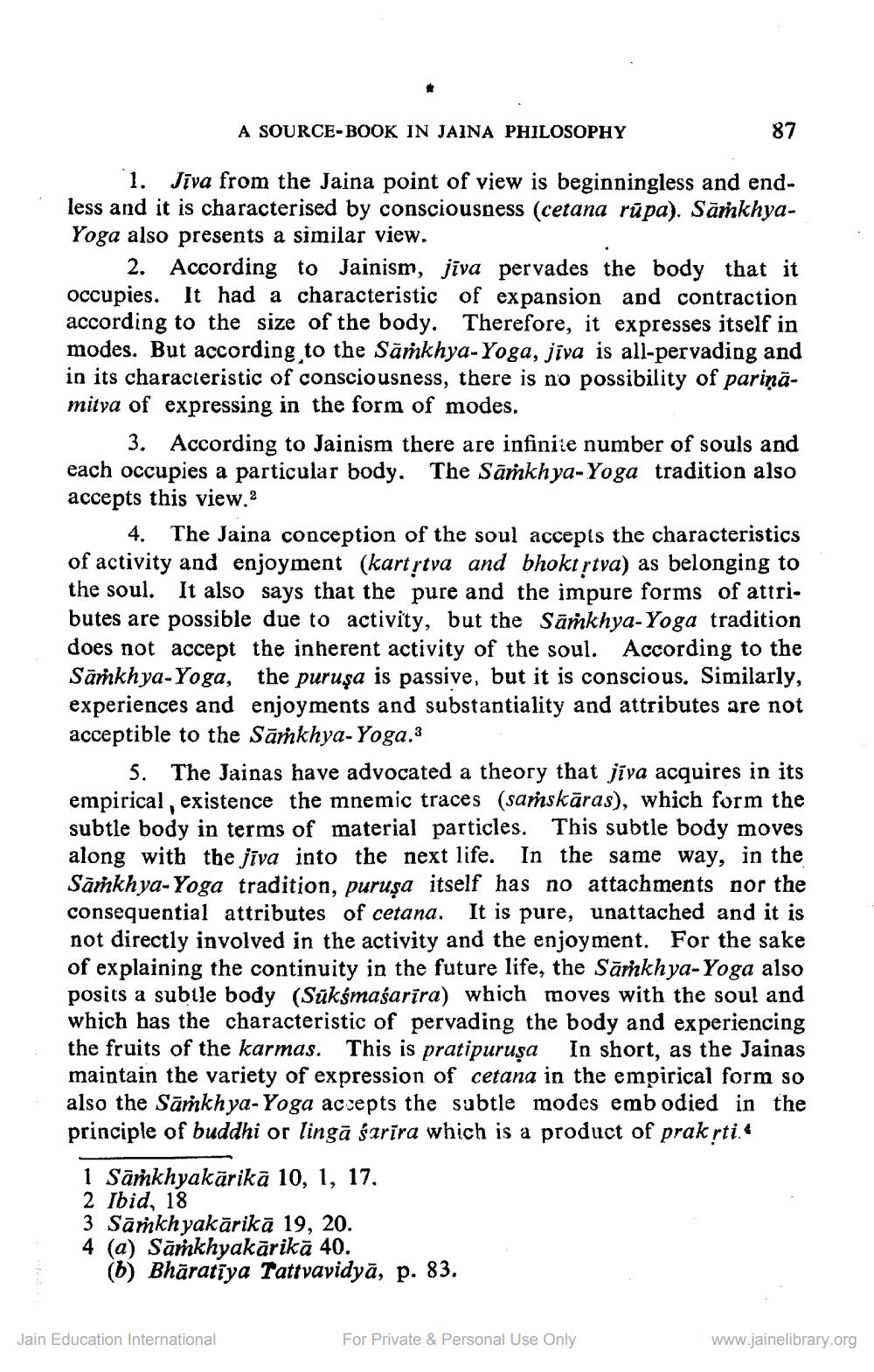________________
A SOURCE-BOOK IN JAINA PHILOSOPHY
87
1. Jīva from the Jaina point of view is beginningless and endless and it is characterised by consciousness (cetana rūpa). SāṁkhyaYoga also presents a similar view.
2. According to Jainism, jiva pervades the body that it occupies. It had a characteristic of expansion and contraction according to the size of the body. Therefore, it expresses itself in modes. But according to the Sāṁkhya-Yoga, jiva is all-pervading and in its characteristic of consciousness, there is no possibility of pariņā. mitya of expressing in the form of modes.
3. According to Jainism there are infinite number of souls and each occupies a particular body. The Sāṁkhya-Yoga tradition also accepts this view.?
4. The Jaina conception of the soul accepts the characteristics of activity and enjoyment (kart stva and bhokt stva) as belonging to the soul. It also says that the pure and the impure forms of attributes are possible due to activity, but the Sāṁkhya-Yoga tradition does not accept the inherent activity of the soul. According to the Sankhya-Yoga, the puruşa is passive, but it is conscious. Similarly, experiences and enjoyments and substantiality and attributes are not acceptible to the Samkhya-Yoga.3
5. The Jainas have advocated a theory that jīva acquires in its empirical, existence the mnemic traces (saṁskāras), which form the subtle body in terms of material particles. This subtle body moves along with the jīva into the next life. In the same way, in the Sāṁkhya-Yoga tradition, puruşa itself has no attachments nor the consequential attributes of cetana. It is pure, unattached and it is not directly involved in the activity and the enjoyment. For the sake of explaining the continuity in the future life, the Sāṁkhya-Yoga also posits a subtle body (Sūksmaśarīra) which moves with the soul and which has the characteristic of pervading the body and experiencing the fruits of the karmas. This is pratipuruṣa In short, as the Jainas maintain the variety of expression of cetana in the empirical form so also the Sāṁkhya-Yoga accepts the subtle modes embodied in the principle of buddhi or lingā sarīra which is a product of prakrti. 1 Sāṁkhyakārikā 10, 1, 17, 2 Ibid, 18 3 Sāṁkh yakārikā 19, 20. 4 (a) Sāṁkhyakārikā 40.
() Bhāratīya Tattvavidyā, p. 83.
Jain Education International
For Private & Personal Use Only
www.jainelibrary.org




